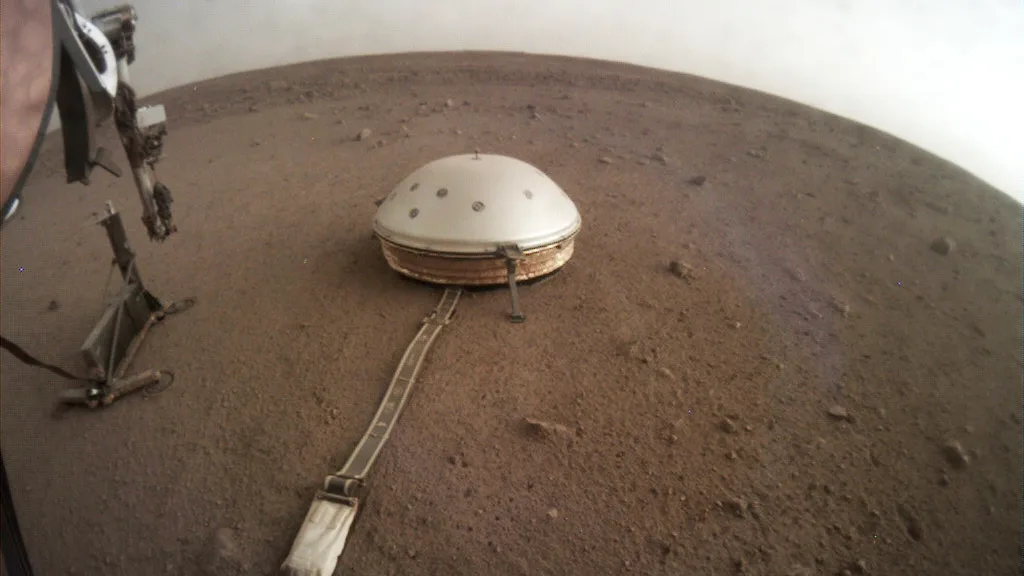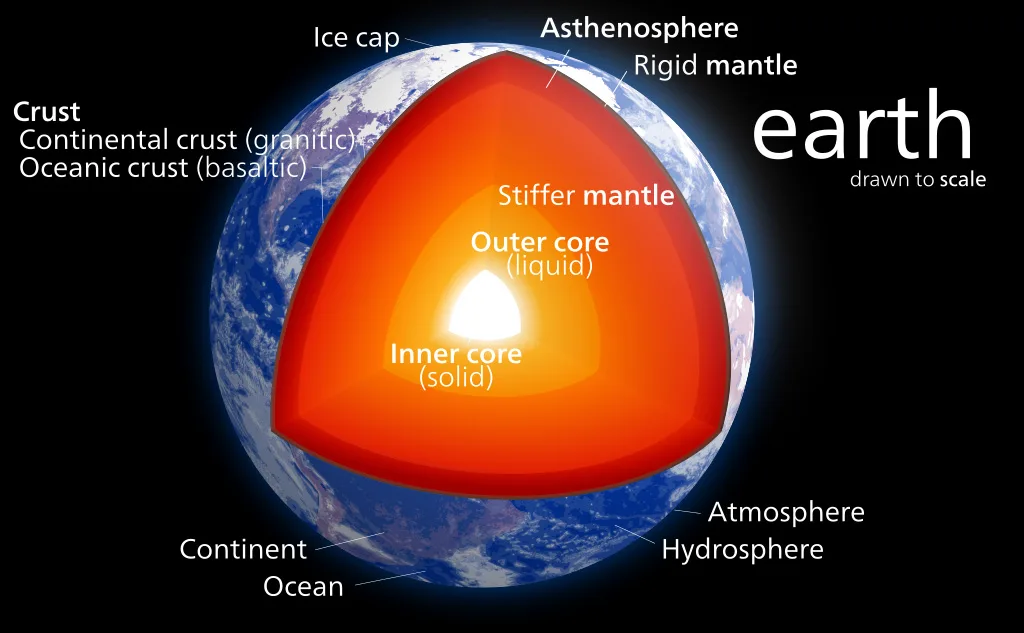
NASA lander may have felt its first marsquake. Listen here!
Has it finally happened? NASA's InSight lander may have detected its very first marsquake!
NASA's newest Mars lander, InSight, which landed on the Fourth Planet from the Sun in late November 2018, has been set up for months now to detect what are known as 'marsquakes'.
Now, based on data it has sent back to NASA, it appears as though it may have actually detected one!
"InSight's first readings carry on the science that began with NASA's Apollo missions," said Bruce Banerdt, InSight Principal Investigator, at NASA's Jet Propulsion Laboratory (JPL), according to a NASA press release on Tuesday. "We've been collecting background noise up until now, but this first event officially kicks off a new field: Martian seismology!"
Has this NASA lander picked up its first MARSQUAKE? LISTEN IN
In the video, the first sound we hear is the vibrations caused by air flowing over the ground. After that is the signal of what is likely a real marsquake. Finally, the seismometer picked up the vibrations from the movement of the lander's robotic arm. The vibrations have been processed and turned into sound for us to hear.
According to NASA, the tremor was detected by InSight's Seismic Experiment for Interior Structure (SEIS) instrument (pictured below), on April 6, 2019, which is the 128th Martian day since InSight landed (Sol 128). While the seismometer has treated us to the sounds of the Martian wind already, caused by air flowing over the lander's solar panels, this appears to be the first recorded vibrations that likely came from inside the planet.

InSight's SEIS instrument (centre) rests on the Martian surface in this photo taken on April 26, 2019 (Sol 146). Covered by a protective white dome, this instrument waits patiently to pick up any vibrations through the ground. InSight's other primary instrument, the Heat and Physical Properties Package (HP^3) is visible to the left, as is the edge of the lander deck. Credit: NASA/JPL-Caltech
While NASA says that there have been three other sets of vibrations picked up by SEIS's most sensitive detectors, on March 14 (Sol 105), April 10 (Sol 132) and April 11 (Sol 133), these were much fainter than the April 6 (Sol 128) event.
"The Martian Sol 128 event is exciting because its size and longer duration fit the profile of moonquakes detected on the lunar surface during the Apollo missions," Lori Glaze, Planetary Science Division director at NASA Headquarters, said in the press release. During the Apollo missions of the 1960s and 1970s, seismometers placed on the surface by the astronauts were able to record quakes on the Moon, showing that it was seismically active.
There's no telling, yet, what caused these four marsquakes. The mission team is still trying to determine their source. Also, the tremors picked up so far are apparently not sufficient to give scientists any meaningful insights about the interior of Mars. As more are detected, however, and especially larger ones, it will allow the mission scientists to slowly build up a profile of what Mars is like, inside.
(DON'T MISS: Life on Mars? NASA InSight may help solve this mystery)
WHAT'S GOING ON HERE?
Here on Earth, earthquakes occur as the various tectonic plates that make up the planet's surface move and shift around, pushing against or grinding past each other. When scientists began recording the vibrations caused by these tremors, they discovered something remarkable. They could actually use those vibrations to give us a really good idea of what the inside of our planet looked like.

The interior of Earth. Credit: Kelvinsong/Wikimedia Commons (CC BY-SA 3.0)
As for Mars, we have been sending spacecraft and robots there for decades. So far, they have only explored the space around the planet, the planet's atmosphere, and its surface.
Some orbiting spacecraft have used ground-penetrating radar to see a short distance under the surface, sure. Scientists can construct a fairly good model of what they think the inside of Mars is probably like, of course. What the interior of the planet really looks like, however, is still - technically - unknown.
This is why NASA sent InSight.
InSight, which stands for Interior Exploration using Seismic Investigations, Geodesy and Heat Transport, brought along three things to perform its mission.
a seismometer called Seismic Experiment for Interior Structure (SEIS),
a heat probe, called Heat and Physical Properties Package (HP^3), and
a weather station, to sense temperature, wind and air pressure
SEIS is there to detect tremors passing through Mars' surface. These tremors can be caused by the movement of material inside the planet, or wind blowing along the ground, or they can be due to meteoroids hitting the surface. HP^3, once it is fully deployed, will take the planet's temperature, telling us how fast Mars is cooling off. The weather station is there, primarily, so that the scientists can tell the difference between actual marsquakes and 'noise' caused by wind and changes in pressure and temperature (but it will also give us valuable information about the weather on Elysium Planitia).
With the data from all three of these, we should gain a clearer picture of Mars, down to its core.
Source: NASA










